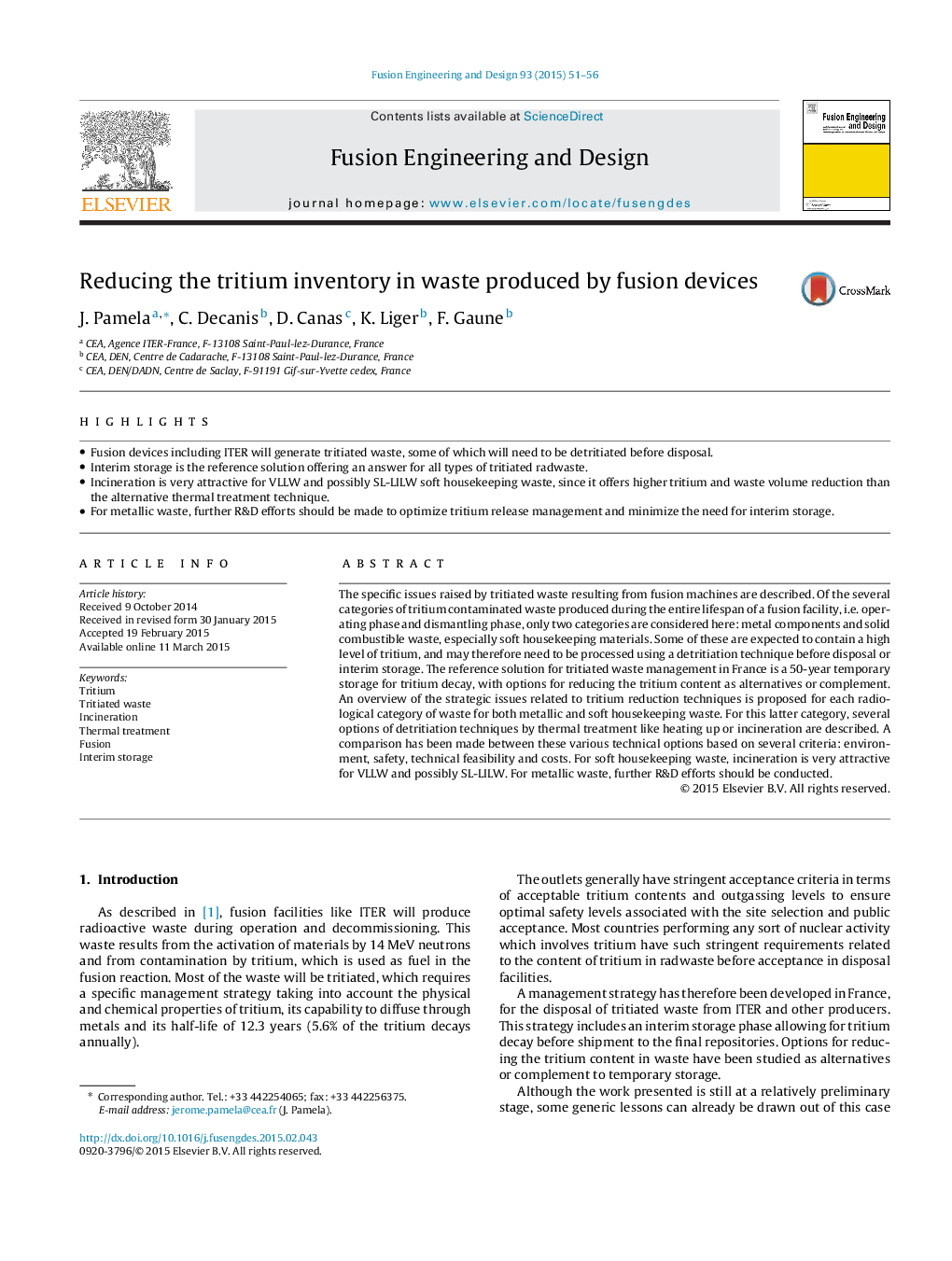| کد مقاله | کد نشریه | سال انتشار | مقاله انگلیسی | نسخه تمام متن |
|---|---|---|---|---|
| 270987 | 504981 | 2015 | 6 صفحه PDF | دانلود رایگان |

• Fusion devices including ITER will generate tritiated waste, some of which will need to be detritiated before disposal.
• Interim storage is the reference solution offering an answer for all types of tritiated radwaste.
• Incineration is very attractive for VLLW and possibly SL-LILW soft housekeeping waste, since it offers higher tritium and waste volume reduction than the alternative thermal treatment technique.
• For metallic waste, further R&D efforts should be made to optimize tritium release management and minimize the need for interim storage.
The specific issues raised by tritiated waste resulting from fusion machines are described. Of the several categories of tritium contaminated waste produced during the entire lifespan of a fusion facility, i.e. operating phase and dismantling phase, only two categories are considered here: metal components and solid combustible waste, especially soft housekeeping materials. Some of these are expected to contain a high level of tritium, and may therefore need to be processed using a detritiation technique before disposal or interim storage. The reference solution for tritiated waste management in France is a 50-year temporary storage for tritium decay, with options for reducing the tritium content as alternatives or complement. An overview of the strategic issues related to tritium reduction techniques is proposed for each radiological category of waste for both metallic and soft housekeeping waste. For this latter category, several options of detritiation techniques by thermal treatment like heating up or incineration are described. A comparison has been made between these various technical options based on several criteria: environment, safety, technical feasibility and costs. For soft housekeeping waste, incineration is very attractive for VLLW and possibly SL-LILW. For metallic waste, further R&D efforts should be conducted.
Journal: Fusion Engineering and Design - Volume 93, April 2015, Pages 51–56